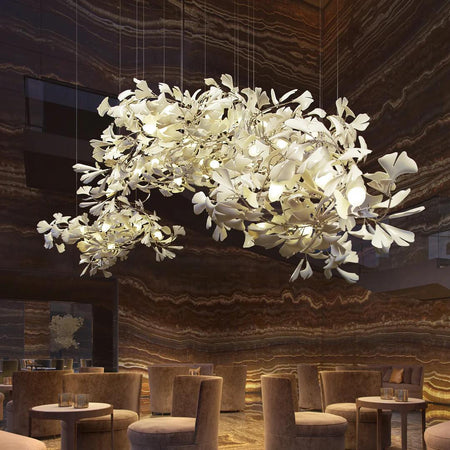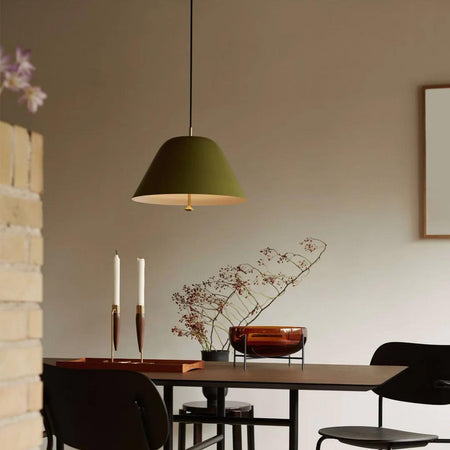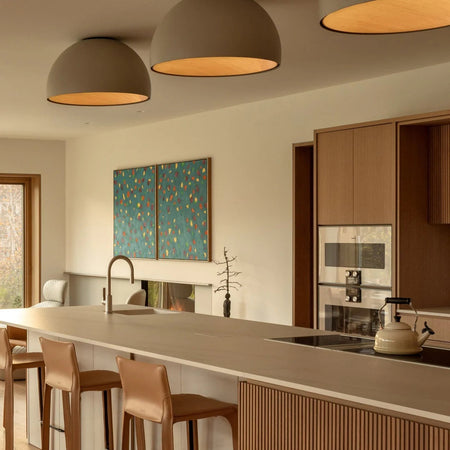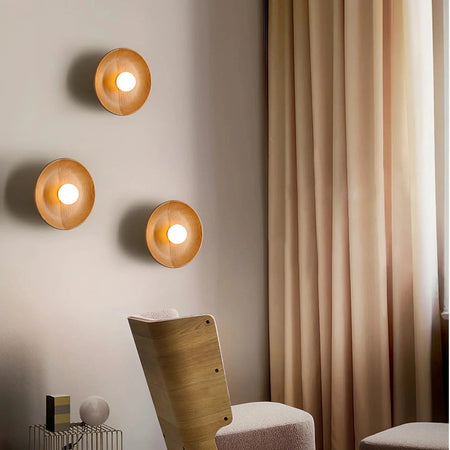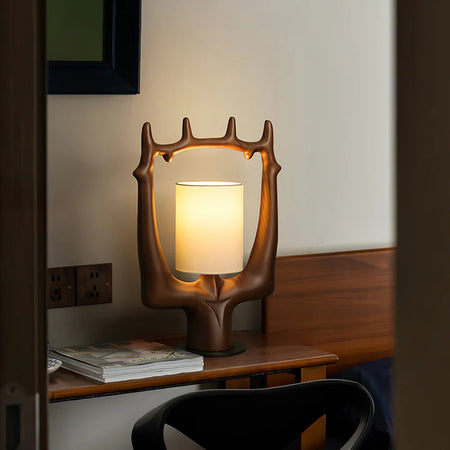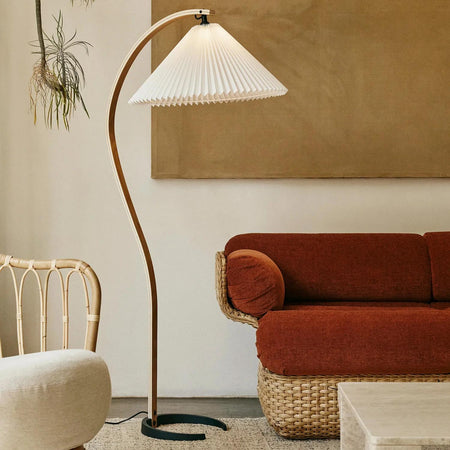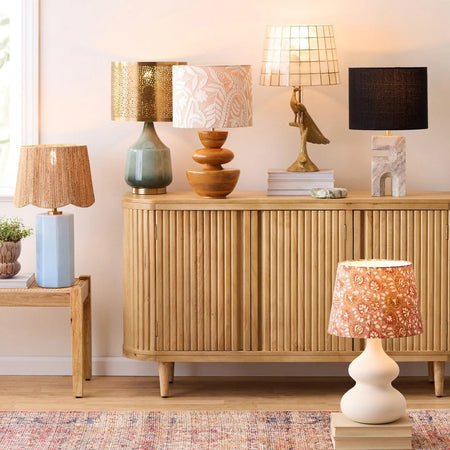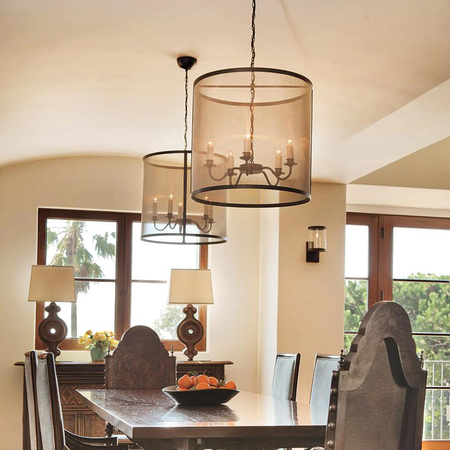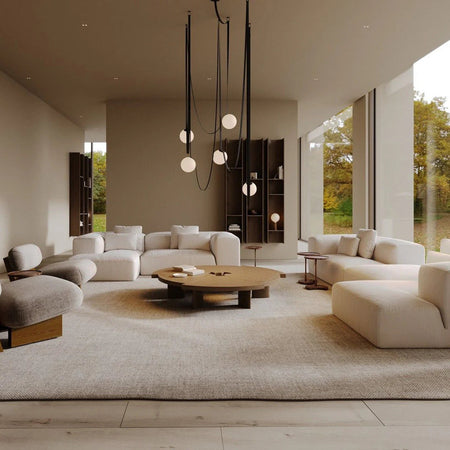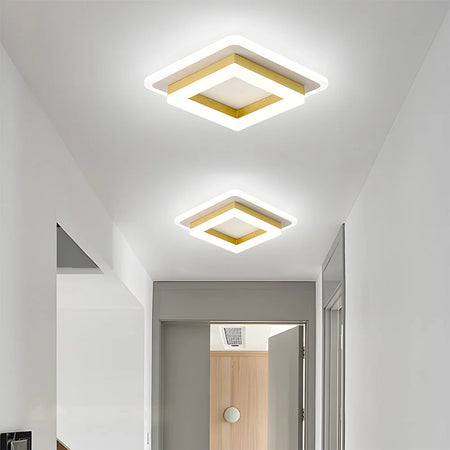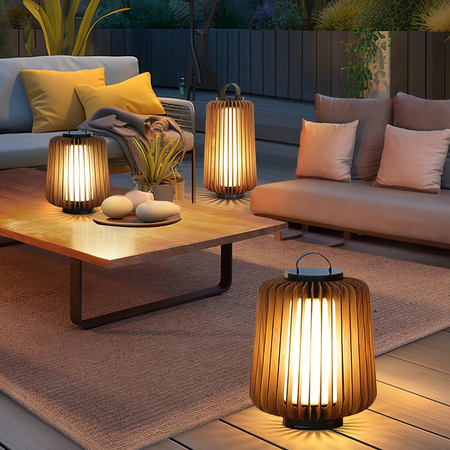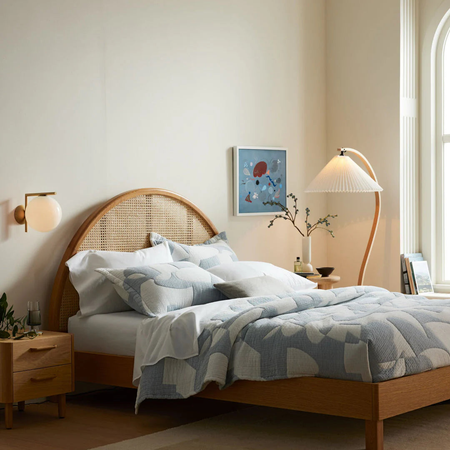What are pendant lights and how to install them safely
August 8, 2025 – Peyton stella Allison
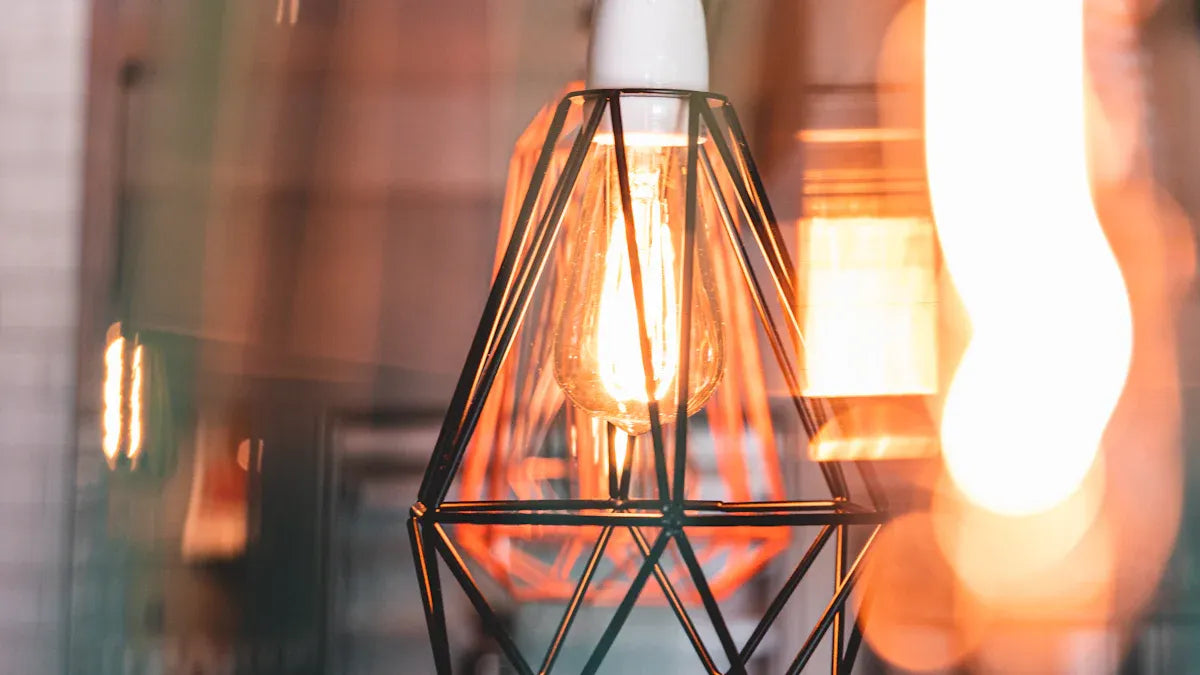
Have you ever wondered what are pendant lights? These stylish fixtures hang from the ceiling and bring both light and character to your space. You often see them in kitchens, dining rooms, or over a cozy reading nook. People love pendant lights because they can transform a room with just one swap. Safety matters a lot here—always check for code compliance and know when to call a professional. Don’t worry if you’re new to this. You can tackle this project with a little guidance and the right tools.
Key Takeaways
- Pendant lights hang down from the ceiling. They make rooms look nice and give focused light. They are both pretty and useful.
- Always turn off the power at the circuit breaker first. Use a voltage tester to check for electricity before you start. This helps keep you safe.
- Get the right tools before you begin. Make sure your ceiling box is strong enough. It must hold the pendant light safely.
- Match the wires by color very carefully. Follow the manufacturer’s instructions step by step. This helps you connect everything safely.
- Call a licensed electrician if you see old wiring. Call if you feel unsure or see any safety problems. Watch for flickering lights or burning smells.
What Are Pendant Lights
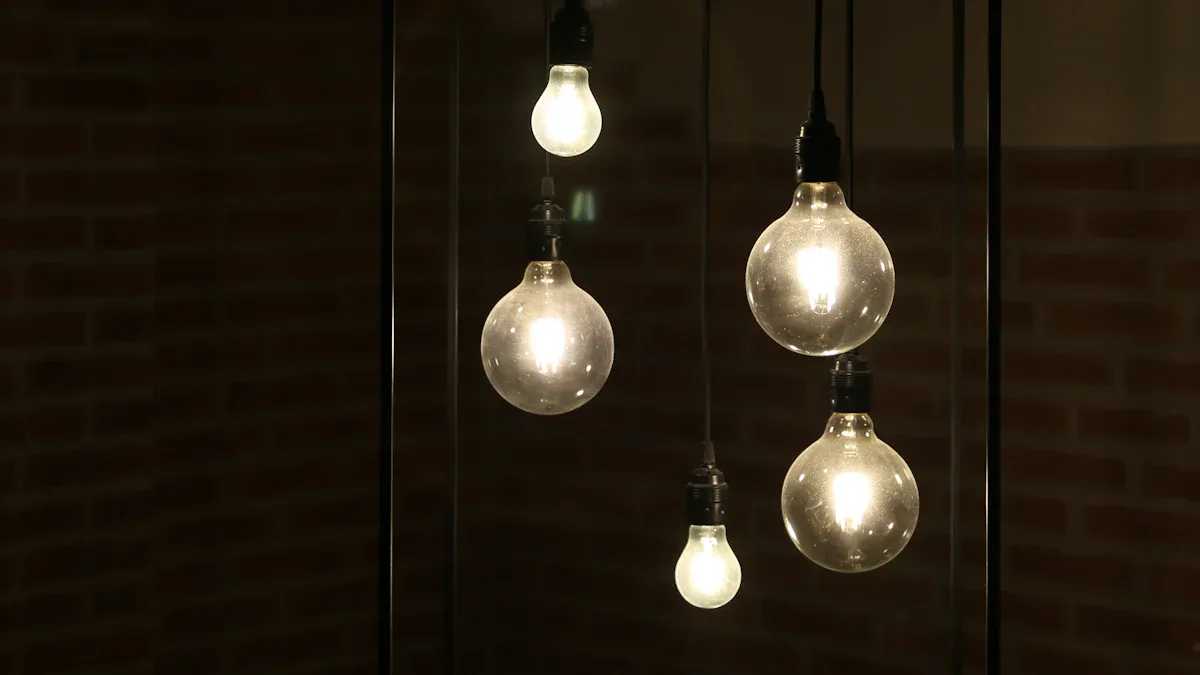
Features and Benefits
If you have ever asked yourself what are pendant lights, you are not alone. Lighting experts say pendant lights are fixtures that hang from the ceiling and serve both decorative and functional purposes. You can spot them by their hanging design, which makes them stand out from other ceiling lights that sit flush against the ceiling. This unique look lets you add personality and style to any room.
Pendant lights do more than just look good. They often provide focused light, especially when they have shades that point down. This makes them perfect for tasks like reading or cooking. You can find pendant lights in many shapes, sizes, and colors. This means you can pick one that matches your style. Many people love how pendant lights can become the main feature in a room. They draw the eye and add a warm glow, especially when you use LED bulbs. Some pendant lights even help reduce noise in busy spaces, making them a smart choice for offices or kitchens.
Tip: Choose pendant lights with LED bulbs for energy savings and a cozy feel.
Here are some reasons why people choose pendant lights:
- They add character and become a focal point in your space.
- You can customize them to fit your style.
- They give off a warm, inviting light.
- They are more decorative than recessed lighting.
- They work well in both small and large rooms.
Common Uses
You might wonder where to use pendant lights in your home. The answer is almost anywhere! Many people hang them above kitchen islands to light up their cooking space. You can also see them over dining tables, where they create a cozy spot for meals. Pendant lights work well in entryways, hallways, and even bedrooms. Some people use them in offices or commercial spaces to add both light and style.
When you think about what are pendant lights, remember that they are not just for looks. They help you see better and make your space feel special. You can use one pendant light for a simple look or hang several together for a bold effect. Just make sure you place them where they will not get in the way and will give you the light you need.
Safety Prep
Tools and Materials
Before you start, gather everything you need. Having the right tools makes your job easier and safer. Here’s a handy list to help you get ready:
- Voltage tester
- Screwdrivers (flathead and Phillips)
- Wire strippers
- Wire nuts and electrical tape
- Mounting bracket or crossbar
- Insulated gloves and safety glasses
- Sturdy ladder
- Fish tape or pulling grips (for tricky wiring)
- The pendant light fixture and bulbs
Professional electricians use special tools like fish tape and pulling grips to guide wires through walls. These tools help prevent wire damage and make the job smoother. Always use a sturdy ladder so you can reach the ceiling safely.
Tip: Lay out all your tools before you begin. This keeps you organized and helps you avoid accidents.
Safety Checks
Safety comes first. Always turn off the power at the circuit breaker before you touch any wires. Use a voltage tester to double-check that the power is really off. Wear insulated gloves and safety glasses to protect yourself from shocks and debris.
Check that the ceiling box is strong enough to hold your new pendant light. The box should not wiggle or feel loose. Secure the mounting bracket tightly to the box. If you are working in a kitchen or bathroom, make sure you have GFI (Ground Fault Interrupter) protection. This keeps you safe in wet areas.
Note: Never install a pendant light in a spot that gets wet unless the fixture is rated for damp locations.
Choosing the Right Fixture
Pick a pendant light that fits your space and meets safety standards. Look for UL-rated fixtures and quality hardware. These products pass safety tests and last longer. Only use the bulb type and wattage listed on the fixture. Using the wrong bulb can cause overheating.
If your project feels too hard or you see old wiring, call a licensed electrician. They have the right tools and know-how to handle complex jobs. This keeps your home safe and gives you peace of mind.
Remember: When in doubt, always ask a pro for help!
Installation Steps
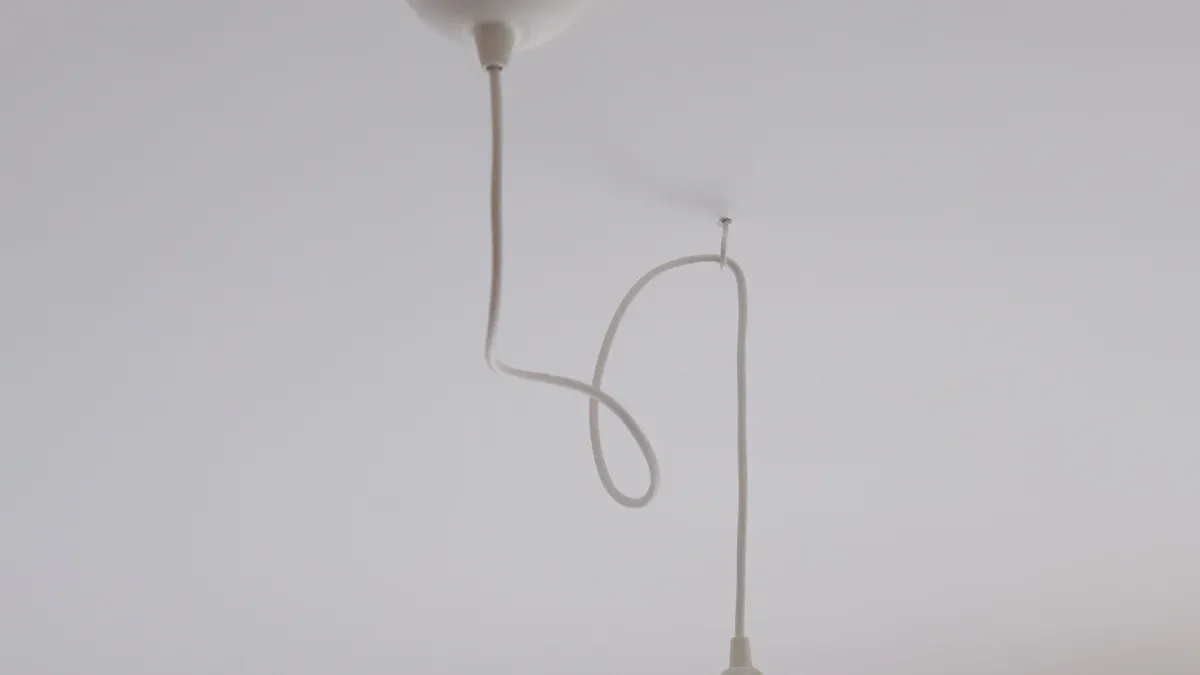
Power Off and Confirm
Before you do anything, you need to make sure the power is off. Go to your circuit breaker and turn off the switch that controls the light you want to replace. Never trust just the wall switch. Always use a voltage tester to double-check that the wires are not live. Test your voltage tester on a working outlet first, so you know it works. Wear insulated gloves and safety glasses for extra protection. If you want to be extra safe, you can use a lockout device and put up a sign so no one turns the power back on by mistake.
Tip: Never stand in water or on a wet floor when working with electricity.
Remove Old Fixture
Now you can take down the old light. Use a sturdy ladder to reach the ceiling. Unscrew the fixture and gently lower it. You will see wires connected with wire nuts. Carefully twist off the wire nuts and separate the wires. If the old fixture is heavy, ask someone to help you hold it. Check the ceiling box to make sure it is strong and not loose. If it wiggles, you may need to secure it to a ceiling joist or use special anchors for extra support.
Mounting Hardware
Next, attach the mounting bracket or crossbar that came with your new pendant light. Use the screws provided and make sure it is tight. The bracket should line up with the holes in your ceiling box. If your ceiling box is not attached to a joist, use anchors rated for the weight of your fixture. This step keeps your pendant light safe and secure.
Note: Always follow the manufacturer’s instructions for mounting hardware. Each fixture can be a little different.
Wiring Connections
Now it is time to connect the wires. Most homes use standard color codes for wiring:
| Wire Function | Typical Color(s) | What It Does |
|---|---|---|
| Hot (Live) | Black | Brings power to the light |
| Neutral | White | Completes the circuit |
| Ground | Green or Bare Copper | Keeps you safe from shocks |
Match the wires from your pendant light to the wires in the ceiling box. Black goes to black, white to white, and green or bare copper to ground. Use wire nuts to twist the wires together. Wrap each connection with electrical tape for extra safety. If you see any red, blue, or yellow wires, these might be for special switches. Always check with a voltage tester before touching any wire, especially in older homes.
Safety Check: Make sure all wires are secure and no copper is showing.
Secure and Test
Once the wires are connected, tuck them carefully into the ceiling box. Attach the canopy of your pendant light to the mounting bracket and tighten the screws. If your pendant has an adjustable cord, press the pin in the canopy to release the lock. Pull the cord down to make it longer or push it up to make it shorter. Adjust each cord until your light hangs at the right height for your space.
Now, screw in the bulbs. Make sure you use the right type and wattage listed on the fixture. If you want to use a dimmer switch, check that your bulbs and fixture are dimmer-compatible. Plug-in pendant lights are easier to install, but hardwired lights look neater and need careful wiring.
Turn the power back on at the breaker. Flip the wall switch and see if your new pendant light works. If it does not turn on, turn off the power and check your connections again.
Reminder: Always follow local electrical codes and the instructions that come with your light. If you feel unsure at any step, call a licensed electrician. Safety comes first!
Troubleshooting and Help
Common Issues
You might run into a few problems after installing your pendant lights. Many people share similar complaints online. Here are some of the most common issues:
- Hanging the pendant too low. You may need to duck when walking under it, which feels annoying.
- Picking a fixture that is too big for the room. Oversized lights can make small spaces feel cramped or the ceiling look lower.
- Using bulbs with harsh or wrong color temperature. This can turn a cozy room into something that feels like a hospital waiting room.
- Placing pendants too close together or too far apart. Poor spacing leads to uneven lighting and strange shadows.
- Ignoring the style or size of the room. Pendants that do not match the space can look out of place or make the area feel crowded.
Tip: Always measure your space and check the recommended hanging height before installing your light.
Safety Red Flags
You should watch for warning signs that something is not right with your pendant light. These safety red flags mean you need to act fast:
- Flickering lights or bulbs that stop working. This often points to loose wires or failing parts.
- Circuit breaker trips often. This can mean your electrical system is overloaded or faulty.
- Burning smells, scorch marks, or buzzing sounds near outlets or switches. These signs show there could be wiring problems or loose connections.
- Sparks when you plug in devices or hot outlets. These are signs of short circuits or overheating.
If you notice any of these problems, turn off the power right away. Do not ignore them. Electrical issues can lead to fires or damage your electronics.
When to Call a Pro
Sometimes you need expert help. If you see any safety red flags, call a licensed electrician. You should also get help if:
- You find old or damaged wiring.
- The fixture feels loose or unstable after installation.
- You cannot figure out why the light flickers or does not turn on.
- You want to add a dimmer switch or change the wiring setup.
Electricians can test your system, fix loose connections, and replace faulty parts. They will make sure everything meets code and works safely. Getting professional help keeps your home safe and your lights working the way you want.
You now know what are pendant lights and how to install them safely. Always turn off the power, use the right tools, and follow the instructions. Double-check each step and make sure you use strong hardware. If you feel unsure or see old wiring, call a licensed electrician. Safe installation keeps your home looking great and helps your lights work well.
Remember: Safety first means you get both style and peace of mind!
FAQ
How high should I hang my pendant light?
You want the bottom of your pendant light to hang about 30 to 36 inches above a table or countertop. This height gives you good light and keeps the fixture out of your way.
Can I install a pendant light without hardwiring?
Yes! Some pendant lights plug into a wall outlet. You just hang the fixture and plug it in. This option works well if you do not want to mess with wiring.
What type of bulb should I use?
Most pendant lights work best with LED bulbs. LEDs save energy and last longer than old-style bulbs. Always check the fixture label for the right wattage and bulb shape.
Do I need a special box to support my pendant light?
If your pendant light feels heavy, use a ceiling box rated for fixtures. Standard boxes hold up most lights, but heavy ones need extra support. Always check the weight limit on your box.

